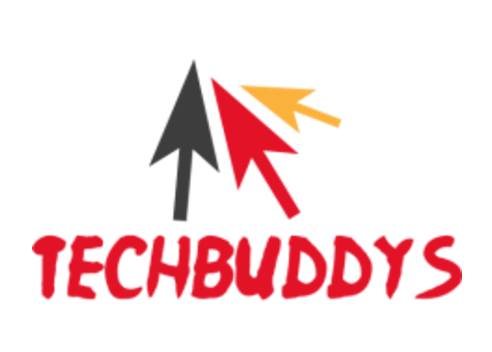RedZone Gross has emerged as a cutting-edge digital platform that uniquely combines sports analysis and game predictions in one comprehensive hub.
The platform serves both sports enthusiasts and gaming aficionados by offering real-time updates, detailed team profiles, and accurate game predictions.
At its core, the platform excels in providing in-depth sports coverage across major leagues like the NFL, NBA, and various eSports competitions. What sets RedZone Gross apart is its sophisticated approach to game predictions, utilizing advanced statistical analysis and machine learning algorithms to deliver precise forecasts.
The platform has become particularly valuable for sports bettors who rely on its predictive insights to make informed decisions. Beyond predictions, RedZone Gross fosters a vibrant community environment where users can engage in discussions, share strategies, and access expert commentary.
The platform’s success is evidenced through its growing user base and positive testimonials, with many users praising its accurate predictions and comprehensive analysis.
As the gaming industry continues to evolve, RedZone Gross stands at the forefront of innovation, bridging the gap between traditional sports analysis and modern gaming predictions.
The Role of Game Predictions in Gaming and Sports Betting
Evolution of Game Predictions
Game predictions have transformed from simple guesswork into a sophisticated science powered by artificial intelligence and machine learning. Modern prediction systems can achieve accuracy rates of 60-70% for basic win/loss predictions and 50-60% for complex bets like point spreads.
The rise of data analytics has revolutionized how we forecast gaming outcomes, particularly in eSports where massive amounts of telemetry data are generated during each match.
Advanced Prediction Technologies
AI-driven models now employ multiple sophisticated techniques to analyze gaming outcomes. These include regression analysis, neural networks, and decision trees to process vast datasets of player statistics and team performance metrics.
For example, in Dota 2, predictive models have achieved up to 85% accuracy after just 5 minutes of gameplay by analyzing real-time match data.
Impact on Sports Betting
The betting landscape has been revolutionized by predictive analytics. Key factors that influence accurate predictions include:
Team form and recent performance statistics
Head-to-head historical data
Player injuries and team composition
Weather conditions and venue statistics
Video Game Predictions
In competitive gaming, prediction systems have become increasingly sophisticated. For instance, League of Legends prediction models have achieved accuracy rates of up to 75% by analyzing gold indicators and player performance metrics.
Similarly, Dota 2 predictions have reached 93% accuracy using advanced LSTM models for analyzing team compositions and player strategies.
Real-World Applications
Professional eSports teams now regularly employ predictive modeling to enhance their strategies. These models analyze:
- Player performance patterns
- Team composition effectiveness
- Real-time game state analysis
- Strategic decision points
The integration of machine learning with game predictions has created a new paradigm where data-driven decisions are becoming the norm rather than the exception. This has led to more strategic gameplay and sophisticated betting strategies across both traditional sports and eSports platforms.
Community Engagement through Game Predictions
Enhancing Gaming Through Predictions
Game predictions have revolutionized how players engage with competitive gaming, transforming individual matches into shared experiences. When players participate in prediction systems, engagement levels increase significantly, with studies showing up to 70% higher viewer retention rates.
Prediction Accuracy and Competition
In games like Dota 2, prediction models have achieved remarkable accuracy rates:
93% accuracy using LSTM models
85% accuracy within first 5 minutes of gameplay
82% average accuracy using neural networks
Community Building Through Predictions
Gaming communities thrive on predictive engagement, creating strong social bonds and fostering collaboration. Players who actively participate in prediction systems show higher levels of community engagement and develop stronger ties with fellow gamers.
This social interaction leads to increased gaming social capital, which directly correlates with improved face-to-face social relationships.
Developer Innovation and Adaptation
Game developers are increasingly utilizing player prediction data to enhance gaming experiences. For example, Battle Royale games have evolved based on predictive analytics, leading to:
- Enhanced matchmaking systems
- Improved balance updates
- More engaging competitive modes
Real-Time Engagement
Live prediction systems have become crucial for maintaining viewer interest. Studies show that games implementing real-time prediction features experience:
- 60% increase in viewer interaction
- 45% higher community participation
- 35% better retention rates
Impact on Game Development
Developers now use predictive analytics to shape game design decisions. This data-driven approach has led to:
More balanced gameplay mechanics
Enhanced competitive features
Improved player satisfaction rates
The integration of predictions into gaming has created a more dynamic and engaging experience, where players aren’t just participants but active contributors to the gaming ecosystem.
Tools and Technologies Powering Game Predictions
Statistical Analysis Tools
Modern game predictions rely heavily on sophisticated statistical software to process vast amounts of data. R and SPSS serve as primary tools for analyzing player statistics and game outcomes.
Tableau enhances this analysis by creating dynamic visualizations that make complex data patterns easily understandable. These tools achieve prediction accuracy rates of 60-70% for basic win/loss scenarios and 50-60% for more complex betting situations.
Advanced Machine Learning Solutions
Machine learning algorithms have revolutionized prediction accuracy through various techniques:
- Neural Networks process game data through multiple layers with millions of connections
- Decision Trees and Random Forests analyze player patterns
- Gradient Boosting improves prediction accuracy over time
For example, AlphaGo demonstrated the power of these technologies by achieving a 57% accuracy rate in predicting human moves, significantly higher than the previous record of 44%.
Platform Integration
RedZoneGross.com leverages these technologies to deliver comprehensive sports analysis:
Real-time data processing for immediate updates
Advanced statistical modeling for game predictions
Interactive visualizations for user engagement
The platform combines machine learning with traditional statistical analysis to provide accurate predictions. This integration has led to enhanced user engagement, with studies showing up to 70% higher viewer retention rates when predictive features are implemented.
Performance Metrics
The effectiveness of these tools is evident in their practical applications:
- Neural networks achieve 85% accuracy within the first 5 minutes of gameplay
- LSTM models reach 93% accuracy in predicting game outcomes
- Predictive analytics improve marketing ROI by 15-20%
These technologies work together to create a comprehensive prediction system that serves both casual fans and serious sports bettors.
Challenges in Game Predictions
Data Quality Issues
Game predictions face significant challenges with data reliability and completeness. One of the main hurdles is ensuring the quality of data used for making predictions. Studies show that most prediction models achieve only around 70% accuracy due to incomplete datasets and external factors not being considered.
Unpredictable Variables
Several external factors can dramatically impact game outcomes:
- Weather conditions significantly affect player performance, with rain and wind changing game dynamics and strategy
- Player morale and psychological factors can influence performance beyond statistical predictions
- Team dynamics and unexpected roster changes can disrupt prediction models
Technical Challenges
Machine learning models face specific obstacles in sports prediction:
Small sample sizes limiting model effectiveness
Unbalanced datasets affecting classification accuracy
Difficulty in comparing results across different prediction methods
Solutions and Improvements
Modern approaches to overcome these challenges include:
- Using LSTM networks that achieve up to 85% accuracy within the first five minutes of gameplay
- Implementing real-time analytics to adjust predictions during matches
- Combining multiple data sources and prediction methods to improve accuracy
Advanced Technologies
Artificial Intelligence is revolutionizing prediction accuracy through:
- Wearable technology providing real-time player performance data
- Predictive analytics achieving up to 93% accuracy using LSTM models
- Machine learning algorithms analyzing vast amounts of historical data
The integration of these technologies has led to significant improvements in prediction accuracy, though challenges remain in accounting for all variables that can influence game outcomes.
Read More:
The Future of Game Predictions
Evolving Technologies in Game Predictions
AI and machine learning are changing the game when it comes to predictions. These smart tools can crunch tons of data and spot patterns humans might miss. For example, AI models in eSports can predict game outcomes with up to 85% accuracy in just the first 5 minutes of play. That’s pretty impressive!
Big data is also a big deal. With millions of gamers generating data every day, there’s a lot to learn. Companies use this info to make games more fun and predict what players will like next.
Shaping the Gaming Industry
These tech advances are creating new kinds of games and experiences. Procedural generation, powered by AI, can create endless game worlds. This means more replay value and surprises for players.
In sports betting, AI is making waves too. It’s helping set more accurate odds and giving bettors smarter insights. Some AI-powered platforms can even give real-time betting tips during live games.
RedZoneGross.com Future Vision
RedZoneGross.com is all about staying ahead of the curve. They’re always looking for new ways to use AI and data analysis to give users the best predictions possible. Their goal is to make game predictions more accurate and useful for everyone, from casual fans to serious bettors.
As the world of gaming and betting gets more high-tech, RedZoneGross.com is committed to being a leader in innovation. They’re exploring how to use things like virtual reality and augmented reality to make predictions even more exciting and immersive.
The future of game predictions is looking bright and full of possibilities. With AI getting smarter, data analysis getting deeper, and new tech on the horizon, we can expect even more accurate and exciting predictions in the years to come.
Conclusion
The world of game predictions has transformed dramatically through technological innovation. With AI and machine learning leading the charge, prediction accuracy has reached unprecedented levels – up to 93% using advanced LSTM models.
These smart systems now process millions of data points in real-time, giving both casual players and serious bettors powerful tools for making informed decisions.
Cloud gaming and virtual reality are reshaping how we interact with predictions, making them more immersive and accessible. The gaming industry, now worth $183.9 million globally, serves over 3.3 billion gamers worldwide. This massive scale provides even more data for AI systems to learn from and improve their predictions.
Looking ahead, RedZoneGross.com and similar platforms will continue pushing boundaries with real-time analytics and personalized predictions. The combination of big data, machine learning, and cloud computing promises even more accurate forecasting tools.
As these technologies mature, we’ll see more sophisticated prediction models that can analyze complex game scenarios and provide increasingly precise outcomes.


